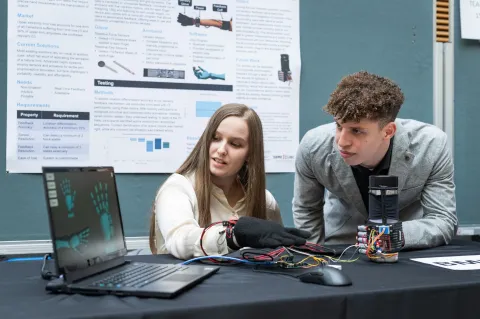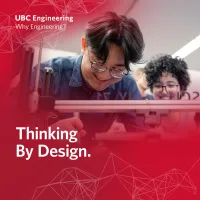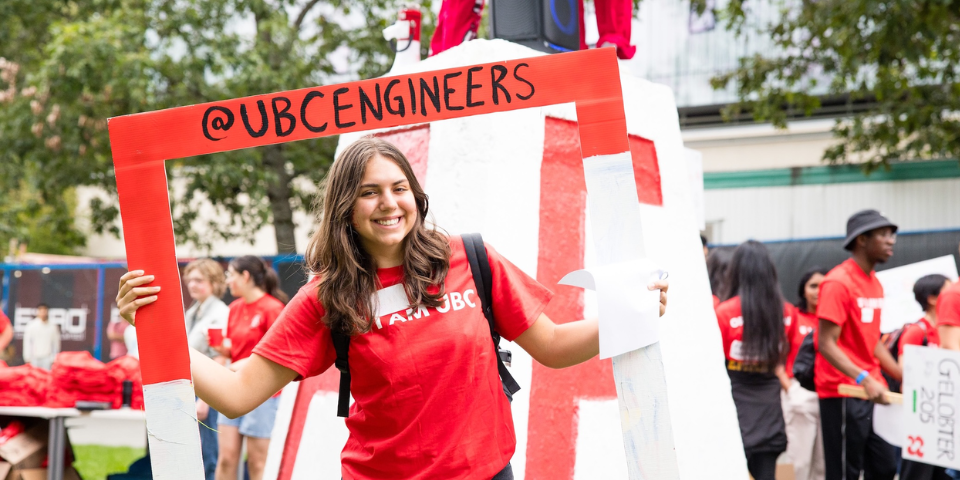"Design projects are woven throughout the program, culminating in the fourth-year capstone projects that come directly from industry clients. This gives students the opportunity to work on real-world challenges and gain experience in different areas of practice."

- Program:
mRNA vaccines. Stem cell therapies. Engineered organoids. Prosthetic limbs. AI-driven drug discovery. Robotic surgery. These are just some of the examples of the profound ways that biomedical engineers have improved human health and quality of life.
Biomedical engineers work at the intersection of technology and medicine, applying their knowledge of biology and engineering to develop products and processes that are transforming health care.
If you’re interested in using your skills to benefit others – and you’re not afraid of a challenge! – biomedical engineering could be a very rewarding field of study that can lead to a diverse range of career pathways.

“Biomedical engineering is very much focused on improving lives and health,” says Dr. Jenna Usprech, Assistant Professor of Teaching at SBME.
“We see that caring dimension reflected in our students, who bring a very thoughtful and compassionate approach to their work and are profoundly interested in making a difference.”
What broader trends are impacting biomedical engineering?
British Columbia is home to a thriving life sciences industry with lots of innovative companies – from start-ups to multinationals – active in this space. A report from Life Sciences British Columbia in 2024 identified that there are more than 28,000 people currently employed in the life sciences and biomanufacturing industry in BC – and that many more are needed.
The report suggested that there’s already a labour shortage gap in the industry, and that that gap is projected to grow 10-fold by 2027.

Many factors are contributing to the growth of the sector, from the increasing importance of AI and data analytics to advances in new materials and techniques.
What’s it like to study biomedical engineering at UBC?
“There are strong connections between the local biotech and life sciences industry and the faculty here at UBC, who are doing research at the very cutting edge of innovation,” says Dr. Usprech. “This makes UBC an incredibly exciting place to study biomedical engineering.”
At UBC, biomedical engineering is the only engineering program that you can apply to right from high school (for the other engineering programs, you will complete a shared first-year curriculum and then apply to your program of choice at the end of first year).

Curriculum including first year Course descriptions
Students who think they are interested in pursuing biomedical engineering can select the Pre-Biomedical Engineering (PBME) Timetable when they apply to the Faculty of Applied Science at UBC.
PBME students take two specialized biomedical engineering courses in year one that introduce them to the breadth of the field. These are taught by several different faculty members who have varied research and entrepreneurial interests so that students can get a sense of the breadth of the field. Students also take foundational courses in biology and organic chemistry, which are pre-requisites for the second-year biomedical engineering program.

Pre-Biomedical Engineering (PBME) Timetable
“These courses also meet requirements of a lot of medical schools, so if students want to pursue that route, biomedical engineering course requirements should allow them to fulfil that,” notes Dr. Lam.
A second semester lab-based course, often taught by Dr. Lam, focuses on engineering design within the context of biomedicine.
“This is a really great course, where students start building their hand-on experience and applying their knowledge within a healthcare context,” she says. “For example, students design a hydrogel that can slowly release a protein of interest over a period of time, which enables them to grasp the considerations of biomaterial design, learn how to design experiments, practice different experimental methods, and analyze results. The students also get to genetically engineer bacteria, and visualize them using techniques like fluorescence microscopy.”

Not all students will apply to biomedical engineering straight from high school. Some may only discover that this is what they pursue after taking UBC’s foundational first-year engineering courses. And that’s ok! You can apply for biomedical engineering at the end of first year.
If you get in, you will need to take some additional chemistry and biology courses over the summer that are pre-requisites for second-year biomedical engineering courses. You will also need to take an online course that offers an introduction to biomedical engineering.
In years two and three, students continue building their foundational knowledge, with an increasing number of opportunities to take technical electives to gain specialized expertise in areas that include biomechanics, cellular and molecular engineering, biomedical informatics, biomaterials, and signals and systems.
Explore more about the Foundation Year PBME Timetable
Design projects are woven throughout the program, culminating in the fourth-year capstone projects that come directly from industry clients. This gives students the opportunity to work on real-world challenges and gain experience in different areas of practice.
“The engineering design process begins with identifying and defining the problem,” notes Dr. Usprech. “In biomedical engineering, that requires the input of many different people – clinicians, patients, scientists and other engineers. That requires excellent communication skills, and our program creates many opportunities for students to practice and gain those skills. We also focus on inclusive design and the obligations we have to involve the people we are designing for within that process.”

















